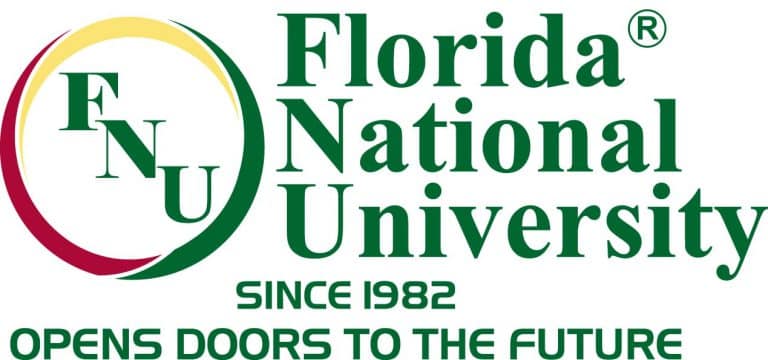
Introduction
The subscription-based business model has transformed industries worldwide, from streaming services and software to meal kits and fitness programs. Companies like Netflix, Spotify, and Amazon Prime have pioneered this approach, shifting consumer behavior toward ongoing memberships rather than one-time purchases.
However, with the rise in subscription services, competition has become fiercer than ever. Consumers are constantly evaluating whether their subscriptions provide enough value to justify the recurring cost. In this environment, building and maintaining brand loyalty is essential for businesses looking to retain customers and grow sustainably.
Understanding Brand Loyalty in the Subscription Model

Brand loyalty refers to a customer’s preference for a specific brand over competitors, leading to repeat engagement and advocacy. In a traditional retail model, loyalty translates into repeat purchases and long-term brand trust. In a subscription-based economy, however, loyalty is measured by customer retention, engagement, and long-term value.
Unlike one-time purchases, subscriptions depend on recurring revenue. This means companies must consistently provide value to prevent cancellations. A single poor experience, lack of engagement, or perceived decline in value can result in high churn rates.
Challenges of Building Brand Loyalty in Subscription-Based Businesses

While the subscription model offers businesses a predictable revenue stream, it also presents unique challenges in customer retention. High competition is one of the biggest hurdles, as consumers today have endless options. If a competitor offers a better deal, a superior user experience, or a more relevant service, customers can easily switch. Additionally, many consumers experience subscription fatigue, where managing multiple subscriptions becomes overwhelming, leading them to cancel those that feel less essential.
Evolving customer expectations further complicate the situation. Subscribers now demand highly personalized experiences, exclusive perks, and continuous innovation. If brands fail to meet these expectations, customers may quickly lose interest. Moreover, price sensitivity plays a significant role in loyalty, as consumers regularly evaluate whether their subscriptions provide sufficient value for the cost. Any perceived drop in value can lead to cancellations, making it crucial for businesses to continuously demonstrate why their service is worth the price.
Strategies to Build and Maintain Brand Loyalty
Personalize the Customer Experience

Personalization plays a crucial role in making subscribers feel valued and understood. When companies tailor experiences based on customer preferences, behavior, and interests, they strengthen customer loyalty. Many brands use data analytics to recommend content, products, or features that align with user preferences, making interactions more relevant. Segmenting subscribers into groups based on interests or purchase history allows for targeted marketing efforts, enhancing the overall experience. Even the onboarding process can be optimized, guiding new users through features relevant to their needs, ensuring they find immediate value in the service.
A prime example of effective personalization is Spotify’s “Discover Weekly” playlists, which curate music based on users’ listening habits. This feature keeps subscribers engaged, as they continually receive fresh content tailored specifically to their tastes.
Continuously Provide Value

To maintain brand loyalty, businesses must offer ongoing benefits beyond the initial subscription. Customers need to feel that their subscription remains indispensable over time. This can be achieved by regularly updating offerings with new content, features, or product improvements. Exclusive perks such as early access to new releases, special discounts, or VIP services can also enhance the perceived value of the subscription. Additionally, educating customers on how to maximize their subscription through tutorials, guides, or personalized recommendations can further reinforce the value of the service.
Amazon Prime exemplifies this approach by continuously adding benefits. What started as a fast-shipping membership evolved into a multi-faceted subscription that includes exclusive deals, an extensive Prime Video library, and even cloud storage options. By consistently expanding the value proposition, Amazon keeps customers engaged and committed.
Foster Strong Customer Relationships

A personal connection with a brand significantly impacts customer retention. Engaging with subscribers beyond transactions helps build lasting relationships and emotional investment. Social media platforms and email communications provide opportunities for brands to interact directly with customers, responding to inquiries, addressing concerns, and creating meaningful engagement. Encouraging user-generated content, such as testimonials and reviews, also helps establish trust and community.
Offering personalized customer support further strengthens relationships. When subscribers know they can rely on a brand for quick and effective assistance, they are more likely to stay loyal. Companies like Dollar Shave Club maintain strong brand loyalty by integrating a humorous and engaging brand voice while prioritizing excellent customer service.
Implement a Rewards and Loyalty Program

Loyalty programs are a proven strategy to encourage long-term commitment by rewarding customers for continued engagement. Many successful subscription brands implement tiered loyalty levels, where subscribers unlock better benefits as they remain with the service longer. Referral programs also play a crucial role in loyalty, as rewarding subscribers for bringing in new customers not only strengthens brand advocacy but also expands the customer base. Offering exclusive discounts, birthday rewards, or anniversary gifts can further incentivize long-term retention.
Sephora’s Beauty Insider program is a great example of this approach. By allowing customers to earn points for purchases and redeem them for exclusive rewards, Sephora keeps subscribers engaged and invested in the brand.
Simplify Subscription Management

Consumers appreciate transparency and control over their subscriptions. If managing their membership feels complicated or restrictive, they are more likely to cancel. Allowing customers to easily upgrade, downgrade, or pause their subscriptions provides flexibility and improves satisfaction. It is also essential to make cancellation or renewal processes straightforward, without hidden fees or long, frustrating steps. Sending reminders about billing cycles and upcoming changes helps prevent misunderstandings and enhances customer trust.
Streaming services like Netflix have adopted this approach by making it simple for users to change or cancel their plans anytime. This reduces frustration and increases the likelihood of customers returning even after they cancel.
Leverage Data and Customer Feedback

Understanding why customers stay or leave is crucial for refining a subscription model and increasing retention. By tracking key performance metrics such as churn rate, customer lifetime value, and engagement levels, businesses can gain valuable insights into subscriber behavior. Collecting direct feedback through surveys or cancellation prompts helps identify pain points and areas for improvement. A/B testing different features, pricing structures, or engagement strategies can also provide data-driven solutions to enhance customer satisfaction.
Streaming platforms like Disney+ leverage user data to recommend content, track viewing preferences, and improve user engagement. This keeps subscribers invested in the platform by continuously offering content that aligns with their interests.
Create a Community Around Your Brand

A strong brand community fosters deeper emotional connections and long-term loyalty. When customers feel like they are part of something meaningful, they are less likely to leave. Creating exclusive social media groups or online forums for subscribers encourages interaction and engagement. Hosting live events, webinars, or Q&A sessions further strengthens the sense of community and enhances customer retention. Sharing the brand’s story, mission, and customer success stories can also create a deeper emotional connection with subscribers.
Peloton is a great example of a brand that has built a thriving community. Through live fitness classes, social features, and leaderboards, Peloton users feel connected to each other and the brand, making them more likely to continue their subscriptions.
Conclusion

Brand loyalty in a subscription-based economy is about more than just acquiring customers—it’s about keeping them engaged and satisfied for the long term. Businesses must prioritize personalization, continuous value, customer relationships, and community-building to foster strong loyalty. By implementing strategies such as rewards programs, seamless subscription management, and data-driven insights, brands can reduce churn and enhance customer retention.
As competition continues to grow in the subscription market, companies that invest in customer loyalty will stand out and thrive. The key to success is not just providing a service but creating a lasting, valuable experience that keeps subscribers coming back.





















